ROOM: The Space magazine is one of the prominent magazines on space exploration, technology and industry. At ROOM, we share a common objective – advancement of peaceful space exploration for the benefit of humankind, all while bringing you incisive articles on an assortment,a range of trending topics. Our authors include analysts and industry leaders from all over the world, which lets us bring you the most up-to-date and accurate information about o exoplaneta kepler-186f.
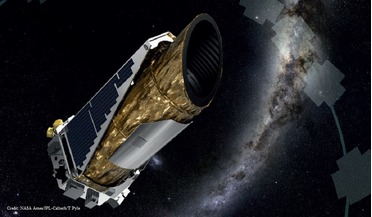 October 2015
Finding Earth-like worlds: the tale of how Kepler-452b was discovered
October 2015
Finding Earth-like worlds: the tale of how Kepler-452b was discovered
... than the orbit of Mercury and the outermost of which would fall within the orbit of Venus. And Kepler 186f which was announced in April 2014: a 1.2 Earth radius planet in the habitable zone of a small star only about... half the size and mass of the Sun. All of the planets in that system, including Kepler 186f, which is the outermost one, fall within the orbit of Mercury. So we’ve been quite astounded with how many...
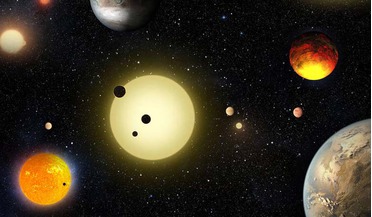 11 May 2016
Kepler scientists announce a major increase in confirmed exoplanet numbers
11 May 2016
Kepler scientists announce a major increase in confirmed exoplanet numbers
... it works by measuring the dip in star light as a planet passes in front of its parent star. Kepler is sensitive enough to measure this slight dimming of starlight and therefore detect the presence of the transiting planet.... So far, using this method, Kepler scientists have identified about 4700 exoplanet ‘candidates’ and have validated about 1000 of them as actual exoplanets...
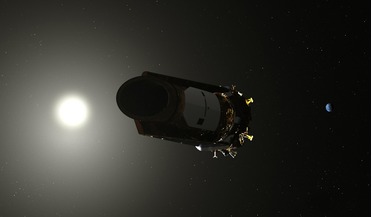 19 November 2018
Kepler officially retires after receiving final "goodnight" commands
19 November 2018
Kepler officially retires after receiving final "goodnight" commands
... worlds is unsurpassed, but last week, NASA said a final goodbye to its formidable first planet-hunting satellite Kepler, as the space agency sent its final set of commands to disconnect communications with Earth. Its retirement comes... however; four years into the mission after the primary mission objectives had been met, two of Kepler's four gyroscope-like reaction wheels, which are used to precisely point the spacecraft, stopped working. As the...
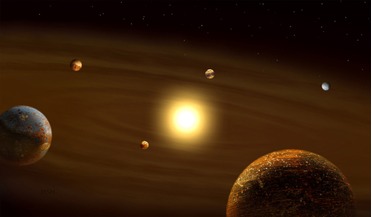 27 July 2019
Hundreds of new planet candidates detected by Kepler
27 July 2019
Hundreds of new planet candidates detected by Kepler
... host star and the largest is only three times the size of Earth. During nearly a decade of service, Kepler observed a staggering 530,506 stars and detected over 2,600 planets; a remarkable feat given that four... Earth-like planets around main sequence stars like our sun as it was designed to, it was proposed that Kepler search for habitable worlds around smaller, dimmer red dwarfs in a different direction to which it had been looking...
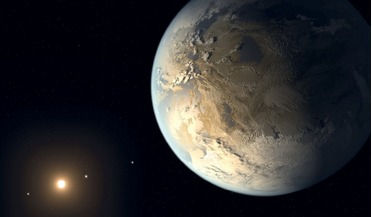 August 2018
Exoplanet census promises radical discoveries
August 2018
Exoplanet census promises radical discoveries
... will give us a complete statistical census of exoplanets at all orbital separations when combined with the Kepler satellite’s statistical census of short period planets. A second WFIRST instrument, called a coronagraph, will ...result, WFIRST is sensitive to analogues of all the solar system’s planets, except for Mercury, while Kepler has primarily studied planetary systems very different from our own. The sensitivity of the WFIRST microlensing...
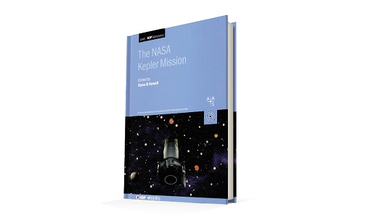 22 June 2021
The NASA Kepler Mission
22 June 2021
The NASA Kepler Mission
...missions have made “fundamental, paradigm-changing advances in essentially every area of astrophysics and planetary science”. The Kepler spacecraft was, in effect, a planet hunter. From its launch in 2009, it continuously monitored the brightness... Indeed, a section excitingly entitled, ‘There are more planets than stars’ reports that the Kepler mission revealed “the fact that planets outnumber stars in our Galaxy”. This is apparently because dwarf...
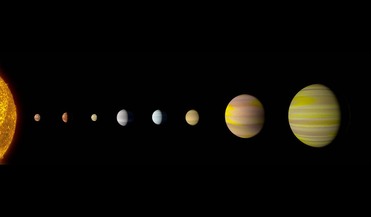 14 December 2017
AI detects eighth planet orbiting distant sun
14 December 2017
AI detects eighth planet orbiting distant sun
... to do the work a human couldn’t. By scanning 15, 0000 previously-vetted signals from the Kepler exoplanet catalogue, the network ‘learned’ to detect what an actual transiting exoplanet signal looked like....that is reminiscent of TRAPPIST-1 set of planets. “These results demonstrate the enduring value of Kepler’s mission,” said Jessie Dotson, Kepler’s project scientist at NASA’s Ames Research Center in California’s Silicon Valley. “New ways of...
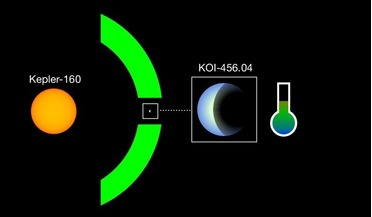 05 June 2020
Exciting exoplanet find around sun-like star
05 June 2020
Exciting exoplanet find around sun-like star
... is not new. It was discovered around ten years ago, followed by the confirmation of two exoplanets, called Kepler-160b and Kepler-160c, four years later. Both of these planets though are substantially bigger than Earth and..., scientists suspected that a third planet might be hiding in the system. After searching through archival Kepler data of Kepler-160, the team found not just one additional planet, but another as well; one of which – KOI-...
 24 November 2021
Astronomers discover more than 350 possible new exoplanets
24 November 2021
Astronomers discover more than 350 possible new exoplanets
...’s newest exoplanet mission TESS has continued to survey the brightest stars near Earth for transiting exoplanets, Kepler’s data haul – the spacecraft downlinked roughly twelve gigabytes of data about once per month – is... still being examined for signs of potential habitable exoplanets. However, because of the problems Kepler experienced, scientists have not been able to use the same automated processes used to find transiting planetary...